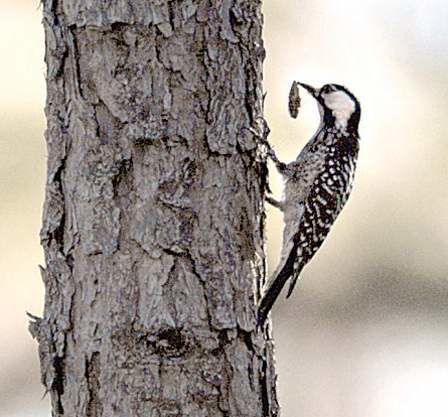Protecting wildlife is one mission at Army base
Published 4:00 am Monday, February 22, 2010

- The red-cockaded woodpecker is among the protected animals at Fort Stewart, Ga.
FORT STEWART, Ga. — Under winter skies, a light infantry unit headed for Iraq was practicing precision long-range shooting through a pall of smoke. But the fire generating the haze had nothing to do with the training exercise. Staff members at the Army post had set the blaze on behalf of the red-cockaded woodpecker, an imperiled 8-inch-long bird that requires frequent conflagrations to preserve its pine habitat.
Even as it conducts round-the-clock exercises to support two wars, Fort Stewart spends as much as $3 million a year on wildlife management, diligently grooming its 279,000 acres to accommodate five endangered species that live here.
Last year, the wildlife staff even built about 100 artificial cavities and installed them in large pines so the woodpeckers didn’t have to toil for six months carving the nests themselves.
The military has not always been so enthusiastic about saving endangered plants and animals. In the early years of the administration of President George W. Bush, the Pentagon often argued that protecting endangered species would hinder its battle preparedness.
But post commanders have gradually realized that working to help species rebound is in their best interest, if only because the more the endangered plants and animals thrive, the fewer restrictions are put on training exercises to avoid destroying habitat.
Today, herculean efforts to save threatened species are unfolding at dozens of military sites across the nation, from Eglin, Fla., where the Air Force has restored and reconnected streams for the Okaloosa darter, to San Clemente Island, Calif., where the Navy has helped bring the loggerhead shrike back from the brink of extinction.
As the owner of some 30 million relatively pristine acres that are often critical habitat for plants and animals, the military is laboring to fulfill its remaining obligations under federal laws like the Endangered Species Act without curbing its training exercises.
From 2004 to 2008, the most recent year for which data is available, the Department of Defense spent $300 million to protect endangered species — more than it spent in the previous 10 years combined, Pentagon figures show.
Such efforts have won over some of the Pentagon’s toughest environmental critics. “Overall, the military has done a great job, and I know they are spending boatloads of money,” said Kieran Suckling, executive director of the Center for Biological Diversity. “When they decide we are going to protect something, they just do it.”






